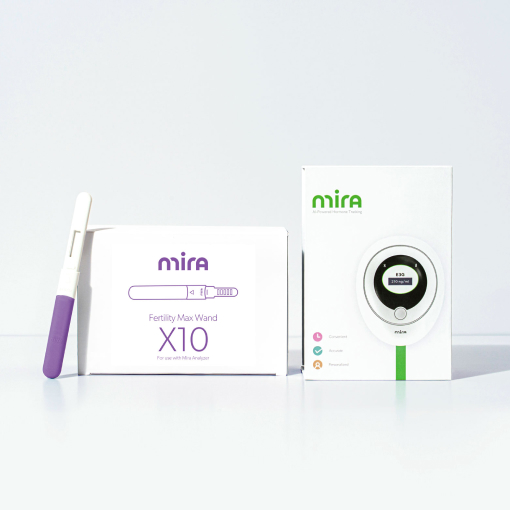Pregnancy Milestones Timeline: Trimester Guide
What is a pregnancy milestone?
First trimester pregnancy milestones
Second trimester pregnancy milestones
Third trimester pregnancy milestones
Pregnancy milestones FAQ

You’ve finally conceived and got that positive pregnancy test – hooray!
But now what? What do the next steps look like along your pregnancy journey?
In this article, we’ll cover how a baby develops throughout pregnancy, important milestones to expect, and common symptoms you may feel as an expectant mother. We’ll also answer some of your most frequently asked questions regarding certain pregnancy milestones.
What is a pregnancy milestone?
Pregnancy milestones are significant fetal developments during pregnancy. For example, a milestone could be the moment the baby’s heart begins beating or when its taste buds are fully developed.
Please note that the following milestones, measurements, and timings are approximate and may vary by individual.
First trimester pregnancy milestones
The first trimester encompasses the first 13 weeks of pregnancy, beginning with the first day of your last period. During this time, a fertilized egg develops into a fully-formed fetus with a heartbeat and some facial features.
Due to hormonal fluctuations, the first trimester can cause you to experience some unpleasant symptoms. The most common include breast tenderness, constipation, morning sickness, sensitivity to smell, food cravings/aversions, heartburn, and mood swings.
3 weeks: fertilization
A sperm fertilizes an egg in the fallopian tubes, forming a zygote. This zygote consists of 46 chromosomes (23 from each biological parent).
4 weeks: implantation, organ development begins
The fertilized egg (zygote) travels to the uterus and eventually implants itself in the uterine lining. During this time, it is also rapidly dividing to form a small cluster of cells called a “blastocyst”.
5 weeks: baby’s heartbeat starts
Pregnancy hormones rise, helping to facilitate the development of the emerging placenta. During this time, the heart and circulatory system will begin to form and the heartbeat will start.
6 weeks: facial features form
Facial structures necessary to form the eyes, ears, nose, and head will begin to develop in weeks 6 to 9. The baby’s toes will also start forming around week 9.
10 weeks: embryo is official a fetus
Week 10 is the milestone where your embryo officially transitions to a fetus. During this time, the head becomes more round, fingers and toes become longer, and the eyelids begin to develop.
12 weeks: can hear the heartbeat at checkup
Even though your baby’s heart has been beating since around week 5, you can now hear it officially beating at your 12-week checkup appointment.
Second trimester pregnancy milestones
The second trimester encompasses weeks 13 to 27 of pregnancy. During this time, your fetus begins to urinate, its sex will become apparent in an ultrasound, and it will be able to respond to familiar sounds while in the womb.
Thankfully, a lot of the unpleasant symptoms associated with the first trimester will be over. However, you may begin to experience other symptoms like melasma or darkening of the skin, dizziness, leg cramps, and increased discharge.
14-16 weeks: baby’s sex becomes apparent and detectable
You will be able to identify the sex of the baby in an ultrasound as early as 14 weeks. Your baby’s total weight will be approximately 1.5 ounces.
18 weeks: will start to feel baby move around
By 18 weeks, you may be able to feel a “bubbling” or “fluttering” sensation. This is your baby moving around inside of your womb.
20 weeks: halfway through pregnancy
You’ve made it! 20 weeks marks the halfway point of your pregnancy.
24 weeks: baby’s taste buds develop
By 24 weeks, your baby’s taste buds will be fully formed and working. But don’t worry – they will not be able to taste or detect the flavors of the foods that you eat.
25 weeks: baby responds to your voice
Your baby may begin to respond and move around to familiar sounds (like your voice) after 25 weeks.
26-27 weeks: baby’s lungs develop
The lungs begin to develop around weeks 26 to 27. They also begin to produce surfactant, which allows the baby’s lungs to inflate and deflate without collapsing.
Recommended for you
Navigate your fertility with peace of mind
Third trimester pregnancy milestones
The third trimester encompasses weeks 28 to 40+ of pregnancy. During this time, your baby begins to kick, stretch, and grow hair.
As your stomach stretches, you may find it more difficult to get comfortable in this phase of pregnancy. Other common symptoms include Braxton Hicks contractions, backaches, heartburn, frequent need to urinate, and anxiety surrounding being a new parent.
28 weeks: baby’s eyes begin opening
Your baby’s eyes are at least partially open and their eyelashes have developed. Their central nervous system can also moderate their breathing and body temperature.
29 weeks: baby kicks and stretches
At 29 weeks, you will begin to feel your baby kicking and stretching – especially in response to the sound of your voice. They can also make grasping movements with their hands.
30 weeks: baby’s hair grows
By 30 weeks, your baby may have a full head of hair. Their eyes will also be able to open completely at this time.
31 weeks: baby’s rapid weight gain
All major development is completed at this point, now your baby will begin to grow and gain weight rapidly.
33 weeks: baby detects light
The pupils are now developed and can change in size when they detect light. Your baby’s bones will also begin to harden at this time.
35 weeks: baby’s skin becomes smooth
Your baby’s skin will now become smooth. Their arms and legs will also continue to grow and get chubbier.
37 weeks: baby is considered “early term”
At 37 weeks, your baby may begin to reposition itself so that its head is pointed down towards the pelvis in preparation for delivery. Although 37 weeks is considered “early term”, there is minimal risk of having complications with delivery at this time.
39 weeks: baby is “full-term”
You are considered at “full-term” once you pass the 39-week milestone. You should be meeting your baby very soon!
40 weeks: due date arrives
Your official due date should arrive at around 40 weeks. You may experience signs of labor at any time. If you still haven’t gone into labor yet, you can expect to deliver within the next 1-2 weeks.
41 weeks: now considered “late term”
Once you reach 41 weeks, your pregnancy is considered “late term”. Even though it can be frustrating and even worrying that you haven’t gone into labor yet, remember that every pregnancy is different and late term deliveries are common.

Pregnancy milestones FAQ
When should I tell people I’m pregnant?
There is no right or wrong time to tell people that you are pregnant. That decision is completely up to you and what you are comfortable with.
It is common for pregnant individuals to announce that they are pregnant once they have officially passed the 3-month milestone. However, this is not a “rule” and you are free to tell people at the time that feels right for you and your partner.
What month is considered most critical in pregnancy?
The first three months (i.e. the first trimester) are considered the most critical months during pregnancy. This is because the growing fetus is particularly vulnerable to substances like alcohol, tobacco, medications, drugs, radiation, and illness. It is also the period where miscarriage is the most common.
What weeks are the highest risk for miscarriage?
The risk of miscarriage is at its highest during the first 6 weeks of pregnancy. In fact, it’s common for pregnant individuals to have a miscarriage during this time before they’ve even realized that they are pregnant.
Medical News Today reports that the risk of miscarriage at week 5 is 21.3%. However, after week 6 the risk decreases to 5%. It then decreases further to 2-4% after week 8. By week 14, the chance of miscarriage is less than 1%.
Mira’s Editorial Process
All content produced by Mira meets stringent editorial standards, ensuring excellence and accuracy in language and medical precision. Every piece undergoes thorough fact-checking and review by qualified professionals. Check out our full editorial process to learn more.














